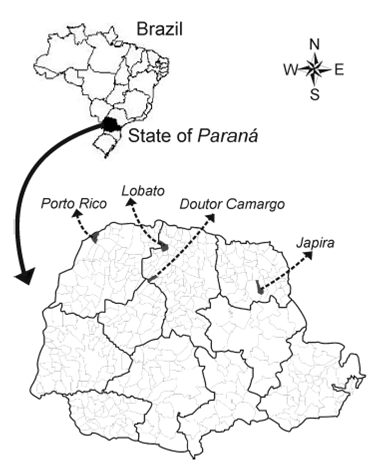ABSTRACT
The genetic study of sandfly populations needs to be further explored given the importance of these insects for public health. Were sequenced the NDH4 mitochondrial gene from populations of Nyssomyia neivai from Doutor Camargo, Lobato, Japira, and Porto Rico, municipalities in the State of Paraná, Brazil, to understand the genetic structure and gene flow. Eighty specimens of Ny. Neivai were sequenced, 20 from each municipality, and 269 base pairs were obtained. A total of 27 haplotypes and 28 polymorphic sites were found, along with a haplotypic diversity of 0.80696 and a nucleotide diversity of 0.00567. Haplotype H5, with 33 specimens, was the most common among the four populations. Only haplotypes H5 and H7 were present in all four populations. The population from Doutor Camargo showed the highest genetic diversity, and only this population shared haplotypes with those from the other municipalities. The highest number of haplotypes was sheared with Lobato which also had the highest number of unique haplotypes. This probably occurred because of constant anthropic changes that happened in the environment during the first half of the twentieth century, mainly after 1998. There was no significant correlation between genetic and geographical distances regarding these populations. However, the highest genetic and geographical distances, and the lowest gene flow were observed between Japira and Porto Rico. Geographical distance is a possible barrier between these municipalities through the blocking of haplotype sharing.
KEYWORDS:
Sandflies; Lutzomyia; mtDNA; Phylogeny; Genetic polymorphism

 Thumbnail
Thumbnail
 Thumbnail
Thumbnail
 Thumbnail
Thumbnail


